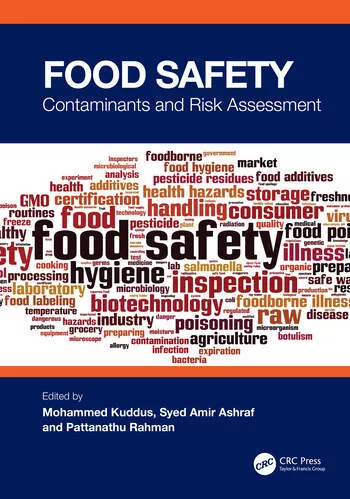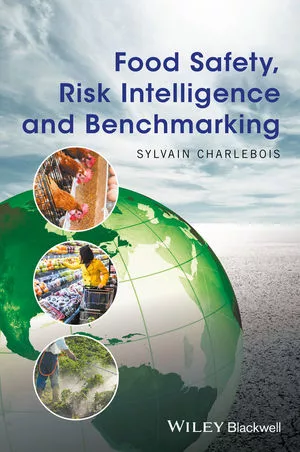How Climate Change Increases Risk of Bacteria, Parasites, and Marine Biotoxins in Food

Image credit: geralt via Pixabay
A recent literature review published in the Robert Koch Institute’s Journal of Health Monitoring has provided an overview of the impacts of climate change on foodborne microbial hazards that are most relevant in Germany; specifically, Salmonella, Campylobacter, Vibrio, Cryptosporidium, Giardia, and marine biotoxins. The paper was authored by representatives of the German Federal Institute for Risk Assessment, the German Department for Safety in the Food Chain, and the Robert Koch Institute’s Department of Infectious Disease and Epidemiology.
Since temperature, precipitation, and humidity affect the spread, reproduction, and survival of pathogens, climate change is projected to have an increasing impact on many foodborne pathogens, parasites, and toxins. The review addresses the risks to human health posed by the influence of climate change on these foodborne hazards, and proposes recommendations for reducing such risks.
Regarding Campylobacter, the increase of infections and outbreaks after heavy rains and flooding due to increased exposure to contaminated water has already been observed. In the case of worsening water scarcity due to climate change, there is a possibility that treated wastewater, in which pathogens like Campylobacter are present, may be used more frequently for food crop irrigation, increasing the likelihood of food contamination. Additionally, a Scandinavian model has projected that increasing temperature and precipitation could cause the number of Campylobacter cases in Denmark, Finland, Norway, and Sweden to double by 2080.
Salmonella is known to be more prevalent in warmer climates and seasons, and the pathogen’s development is affected by ambient temperature. The review references a study that estimates an 8.8 percent increase in the number of weekly salmonellosis cases for every 1 °C (33.8 °F) increase in the mean weekly maximum temperature. Studies have also positively correlated maximum and minimum temperatures, relative humidity, and precipitation with cases of Salmonella infection. Moreover, increased rainfall could lead to the deterioration of water quality, as well as flooding that can inundate wastewater treatment plants leading to the contamination of human, animal, and farm environments by bacteria that is possibly antimicrobial-resistant.
Vibrio is of particular concern for seafood safety, as the pathogen resides in saltwater and brackish water, and flourishes in temperatures above 12 °C (53.6 °F). The occurrence of Vibrio has and will continue to increase with rising water temperatures.
Similar to Campylobacter and Salmonella, instances of infection by parasites Cryptosporidium and Giardia are likely to increase alongside more frequent heavy rainfall and flooding, as these extreme weather events can introduce infectious oocysts/cysts to bodies of water and food crops. Cryptosporidium and Giardia can remain infectious for a long period of time, and they are highly stable against environmental influences and survive well in aqueous environments.
Finally, the risk of intoxication by marine biotoxins is also expected to increase due to increasing ocean temperatures. Warmer surface waters has led to a phenomenon called harmful algal bloom (HAB), which is a sudden, explosive growth of algae that carries negative consequences. Approximately 100 of 300 microalgal species that are known to be involved in the formation of HABs have the ability to produce toxins that can lead to specific toxic syndromes in animals and humans. When shellfish and fish feed on algae that produce biotoxins, humans are at risk of intoxication through the consumption of seafood. Maximum levels have already been set within the EU for five different toxin groups in live bivalve molluscs, and products containing ciguatoxins (the cause of ciguatera poisoning in humans) may not be sold within the EU.
Looking for quick answers on food safety topics?
Try Ask FSM, our new smart AI search tool.
Ask FSM →
Although ensuring that wastewater treatment is regulated and that wastewater does not come into contact with plants that are commonly consumed raw are recognized as important measures for mitigating foodborne illnesses from this specific source, the majority of recommendations proposed by the paper’s authors for ensuring food safety in light of climate change relate to kitchen hygiene. Specifically, thorough handwashing, the use of clean kitchen utensils for food preparation, avoiding cross-contamination, and wearing gloves in appropriate circumstances are highlighted. The authors also stress the importance of the heat kill-step when preparing food, although marine biotoxins are largely insensitive to thermal stress.
The authors also underline the crucial role that supply chain/cold chain management plays in food safety. The paper recommends the use of digital technology to track a product along a supply chain to identify potential risks, such as blockchain or radio frequency identification (RFID) device tags for product authentication, as well as applications of machine learning, data mining, artificial intelligence, and other digital technologies.









